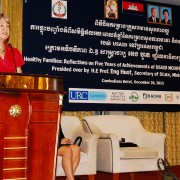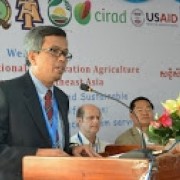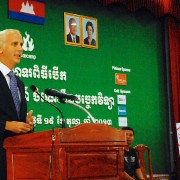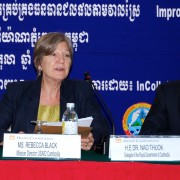
At the time that USAID/Cambodia re-opened, the Royal Government of Cambodia re-established the Ministry of Health. In over 20 years, USAID/Cambodia and the Ministry of Health have worked closely together to rebuild and revitalize the national health system.
USAID’s implementing partners has taken on much of the work collaborating with the government to build capacity in Cambodian hospitals, health centers, and communities. Together they have trained and supported the health care workers who improve the lives of Cambodian mothers and children every day.

We are here today to help address the fact that almost 1 billion people across the globe go to bed hungry every night. To meet the needs of a world population expected to reach 9 billion by 2050, agricultural production will need to increase by at least 60 percent.
There is a strong consensus that agriculture plays a crucial role in any effort to reduce global poverty and hunger. Studies suggest that every one percent increase in agricultural income per capita reduces the number of people living in extreme poverty by between 0.6 and 1.8 percent.

The goal of USAID’s support to technology in Cambodia is to bring tangible benefits to citizens and effect positive change through improved communications and access to information. I hope that as you participate in the BarCamp, you will consider how you can combine your skills, what you learn here, and emerging technologies to contribute to a brighter future for Cambodia. This is a chance for Cambodia to become, in the words of USAID Administrator Rajiv Shah, “a country that believes that dedication and innovation are the only things needed to bridge the gap between the inconceivable and the achievable.”

This was a half-day event, held in Phnom Penh on June 21, 2013, with 190 participants representing 126 organizations attending. The workshop aimed to provide an introduction to 1) USAID/Cambodia's programs and priorities, and 2) the elements of solicitation, a successful proposal and an award from USAID.
The workshop presentation and “useful links” handout are in English and Khmer.








Comment
Make a general inquiry or suggest an improvement.